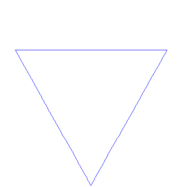| Line 5: | Line 5: | ||
! Table of Contents | ! Table of Contents | ||
|- | |- | ||
| − | | [[Walther_MA271_Fall2020_topic17#Introduction|Introduction]] | + | | [[Walther_MA271_Fall2020_topic17#1. Introduction|1. Introduction]] |
|- | |- | ||
| − | | [[Walther_MA271_Fall2020_topic17# | + | | [[Walther_MA271_Fall2020_topic17#2. Definition and Characteristics|2. Definition and Characteristics]] |
|- | |- | ||
| − | | [[Walther_MA271_Fall2020_topic17# | + | | [[Walther_MA271_Fall2020_topic17#3. Generating Fractals|3. Generating Fractals]] |
|- | |- | ||
| − | | [[Walther_MA271_Fall2020_topic17# | + | | [[Walther_MA271_Fall2020_topic17#4. Examples|4. Examples]] |
|- | |- | ||
| − | | [[Walther_MA271_Fall2020_topic17# | + | | [[Walther_MA271_Fall2020_topic17#5. Applications|5. Applications]] |
| − | + | ||
| − | + | ||
|} | |} | ||
---- | ---- | ||
| − | === Introduction === | + | === 1. Introduction === |
---- | ---- | ||
| − | === | + | === 2. Definition and Characteristics === |
| − | + | While mathematicians are not able to agree on a single definition for fractals, the most commonly used description is one that Mandelbrot published in his book, [https://books.google.com/books?id=0R2LkE3N7-oC ''The Fractal Geometry of Nature'']. He says that a fractal is "a rough or fragmented geometric shape that can be split into parts, each of which is (at least approximately) a reduced-size copy of the whole." | |
---- | ---- | ||
| − | === | + | === 3. Generating Fractals === |
| − | + | ||
| − | + | ||
| − | + | ||
[[File:Snowflake.gif|thumbnail|[https://en.wikipedia.org/wiki/Koch_snowflake <small>Koch Snowflake Animation</small>]]] | [[File:Snowflake.gif|thumbnail|[https://en.wikipedia.org/wiki/Koch_snowflake <small>Koch Snowflake Animation</small>]]] | ||
---- | ---- | ||
| − | === Examples === | + | === 4. Examples === |
---- | ---- | ||
| − | === Applications === | + | === 5. Applications === |
| + | |||
| + | |||
| + | |||
| + | [[Category:MA271Fall2020Walther]] | ||
Revision as of 19:00, 5 December 2020
Contents
Fractals
| Table of Contents |
|---|
| 1. Introduction |
| 2. Definition and Characteristics |
| 3. Generating Fractals |
| 4. Examples |
| 5. Applications |
1. Introduction
2. Definition and Characteristics
While mathematicians are not able to agree on a single definition for fractals, the most commonly used description is one that Mandelbrot published in his book, The Fractal Geometry of Nature. He says that a fractal is "a rough or fragmented geometric shape that can be split into parts, each of which is (at least approximately) a reduced-size copy of the whole."


